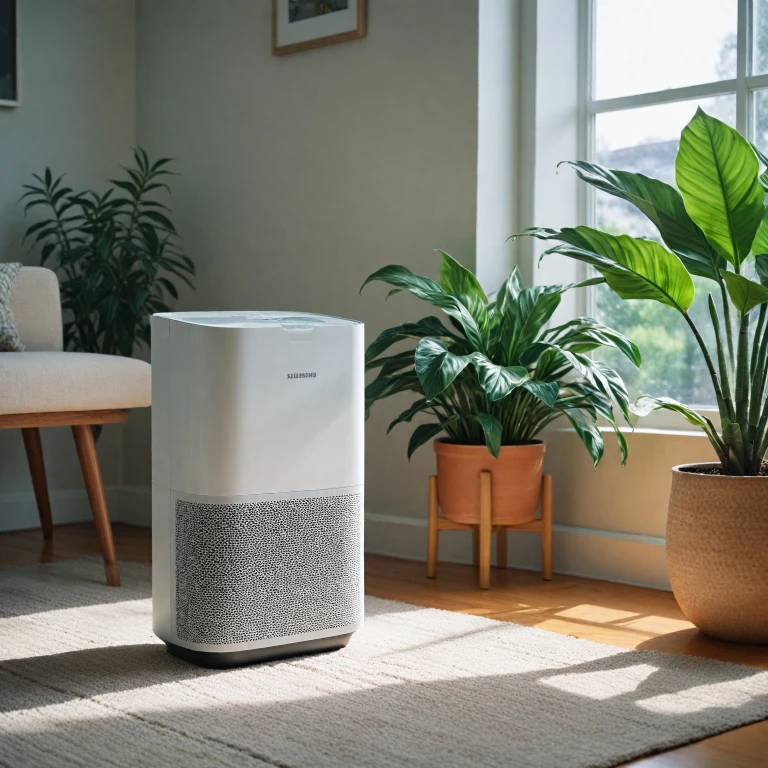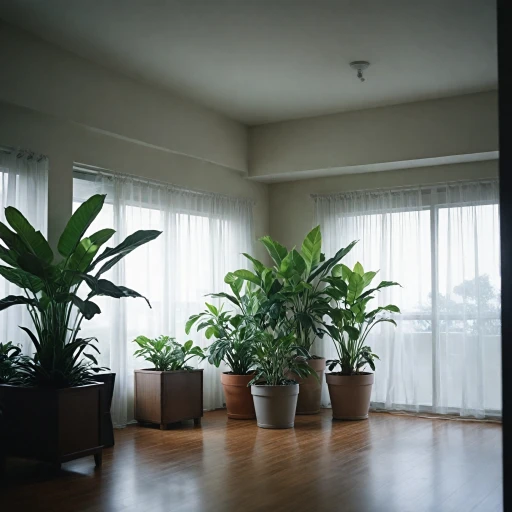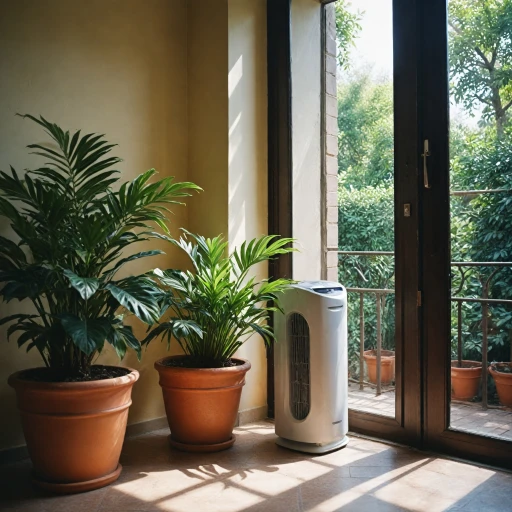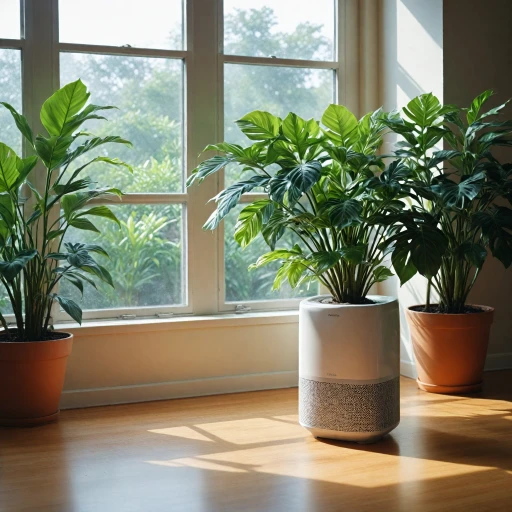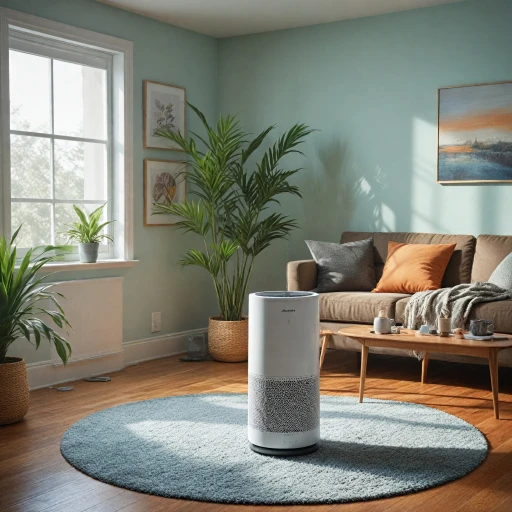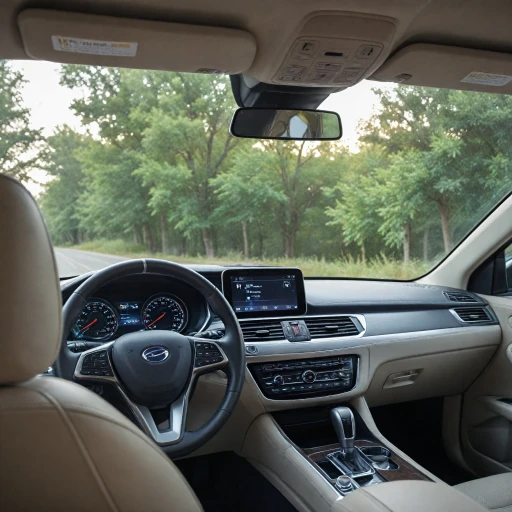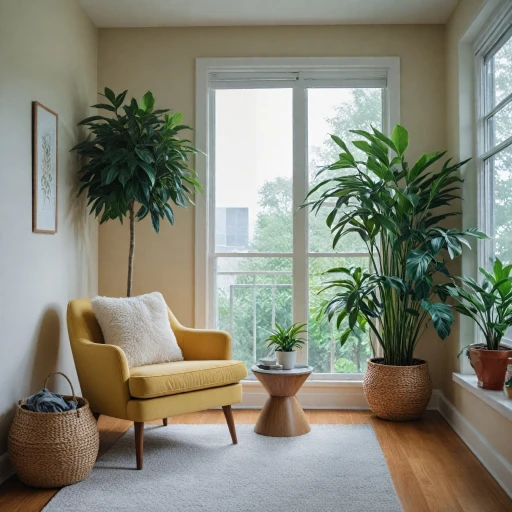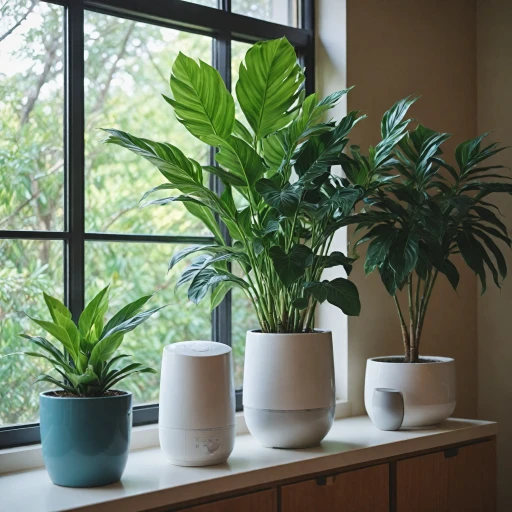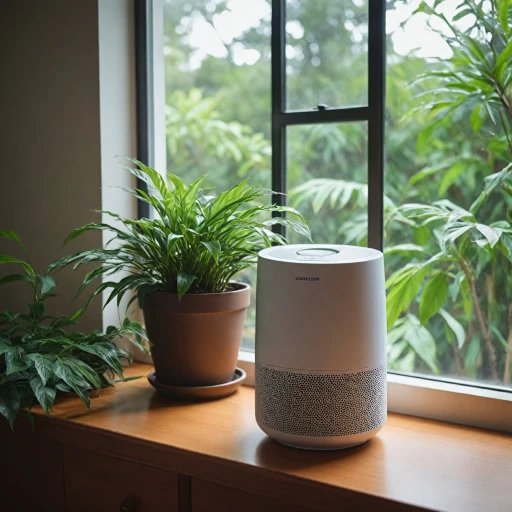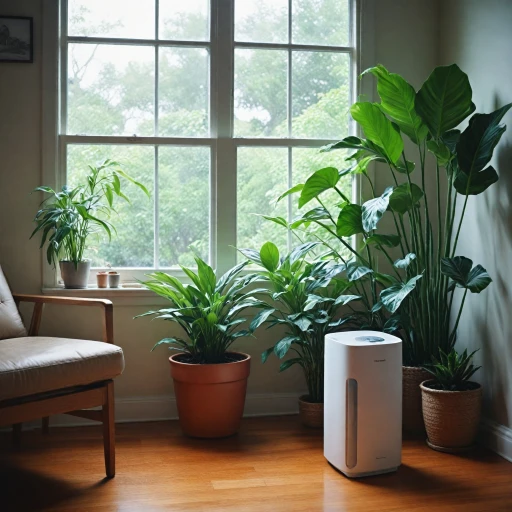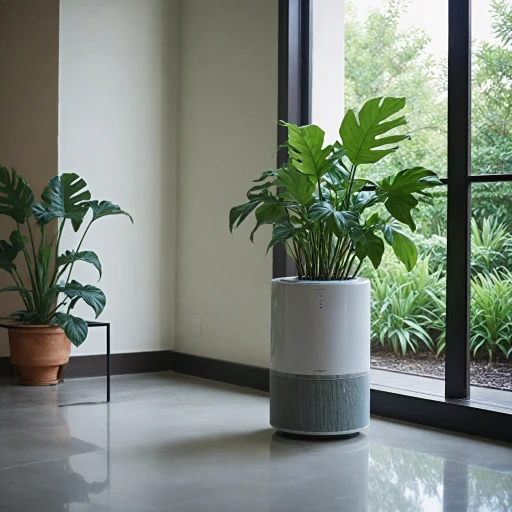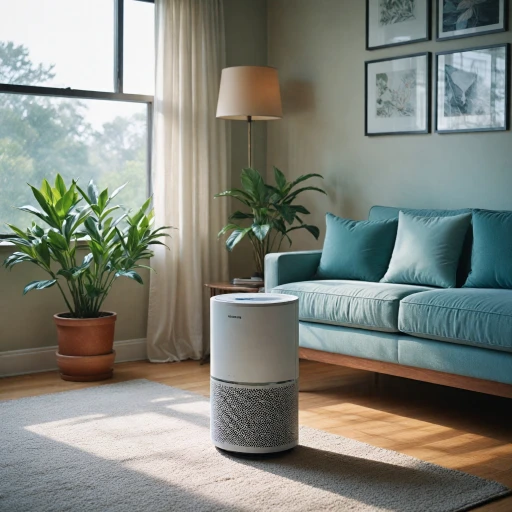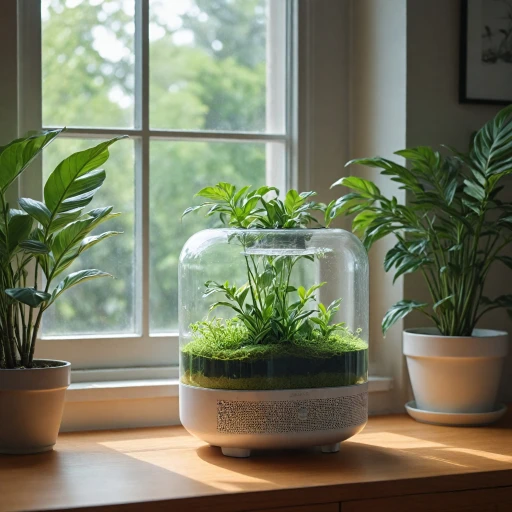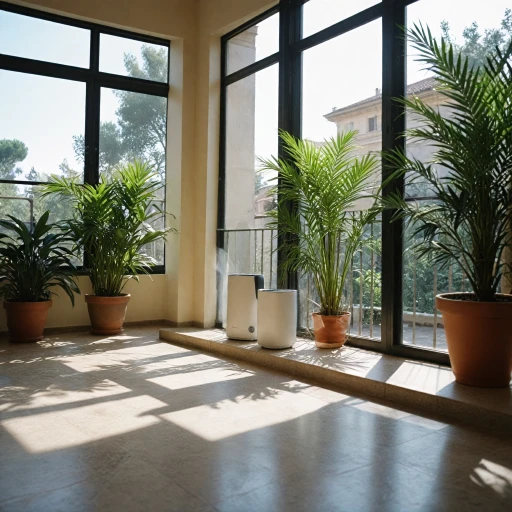
Understanding Portable Air Purifiers
Getting Acquainted with Portable Air Purifiers
In an age where maintaining air quality has become paramount, portable air purifiers have swiftly emerged as a popular solution for small spaces. Understanding how these devices operate can help in making informed decisions that enhance your environment. Portable air purifiers are compact units designed to filter and improve the air quality in individual rooms or confined areas. These machines work by drawing in ambient air, purifying it through a series of filters, and then circulating the cleaned air back into the room. They are effective in tackling common indoor pollutants such as dust, smoke, pet dander, and even some bacteria and viruses. The technology driving portable air purifiers often includes a combination of mechanical filters, like the renowned HEPA filter, and other purification technologies. True HEPA filters are known for capturing up to 99.97% of particles as small as 0.3 microns, making them a preferred choice for many seeking clean air. Some units may also feature additional layers or types of filters to address specific concerns. For those curious about incorporating these purifiers into their daily lives, it's worth noting that they provide a balance between portability and efficacy. Compared to whole-house systems, they are a more economical option, fitting comfortably in rooms of varying sizes from bedrooms to small offices. For more detailed insights into how personal air purification can enhance living spaces, please visit our blog on enhancing your environment with personal air purification.Key Features to Look for in a Portable Air Purifier
Key Attributes of Effective Portable Air Purifiers
When shopping for a portable air purifier, consider several important features that can significantly impact its performance and suitability for your needs.- True HEPA Filter Technology: Look for purifiers with true HEPA filters, which effectively capture 99.97% of airborne particles as small as 0.3 microns. This is essential for reducing allergens, smoke, and pollutants in the air.
- Clean Air Delivery Rate (CADR): A high CADR indicates the purifier's efficiency in filtering smoke, pollen, and dust from the air. Opt for a model that offers a CADR rating suitable for the room size you intend to use it in.
- Noise Level: Consider the noise levels, especially if you plan to use the purifier in a bedroom or a quiet room. Many models offer varying fan speeds that allow you to prioritize between sound levels and purification efficiency.
- Smart Features: Some air purifiers come with smart capabilities, such as sensors that monitor air quality and adjust settings automatically. These features can enhance convenience and ensure optimal performance without constant manual adjustments.
- Portability and Design: Evaluate the size, weight, and design of the unit. A portable air purifier should be easy to move and fit seamlessly into your space. Aesthetic preferences may vary, with options ranging from sleek white designs to more colorful offerings.
- Filter Replacement and Maintenance: Regular maintenance is key for optimal performance. Check how often filters need to be replaced and consider the cost of replacement filters. Some products may offer longer-lasting filters or include indicators that notify you when it's time for a change.
- Value and Price Considerations: Factor in the regular price compared to its features and efficiency. High-end options like the pure max or blue pure may offer advanced features, but ensure these align with your specific needs and budget.
Health Benefits of Using a Portable Air Purifier
Enhancing Your Health with Portable Air Purifiers
One of the primary benefits of using a portable air purifier is its ability to significantly improve indoor air quality. Poor air quality can lead to various health issues, making it essential to address this concern, especially if you're in a high-risk environment or have respiratory problems.- Capturing Harmful Particles: Portable purifiers equipped with a true HEPA filter are highly effective in trapping fine particles such as dust, pollen, pet dander, and pollution. This feature helps reduce allergens in the room, creating a cleaner and healthier living space.
- Reducing Smoke and Odors: Whether it's from cooking, tobacco smoke, or nearby wildfires, odors can be unpleasant and harmful over time. A quality air purifier will help neutralize these smells, contributing to a fresher indoor environment.
- Promoting Better Sleep: Clean air isn't just beneficial for overall health; it also supports improved sleep quality. By eliminating irritants and maintaining a steady flow of purified air, you're likely to enjoy a more restful night's sleep.
- Supporting Cardiovascular Health: Studies have shown a link between air pollution and cardiovascular health risks. Using an air purifier to reduce the level of pollutants can aid in mitigating these risks, offering an added layer of protection for your heart.
Comparing Portable vs. Whole-House Air Purifiers
Spotting the Differences Between Portable and Whole-House Solutions
To truly grasp the value of a portable air purifier, it's essential to differentiate it from a whole-house air purifier. While both can improve the air quality, their scope and functionality differ significantly. Portable air purifiers are designed for mobility and flexibility. They can be easily moved from room to room, allowing you to target specific areas with high levels of smoke, allergens, or any other pollutants. This is particularly beneficial if you want to ensure clean air in a medium to small-sized room where you spend most time. These portable devices generally feature a true HEPA filter, which effectively captures particles like dust and smoke. Whole-house air purifiers, on the other hand, are integrated into a home’s HVAC system. They work constantly to cleanse the air throughout your entire home. While they might seem like an all-encompassing solution, they often come at a regular price of installation and maintenance, which is significantly higher than that of portable purifiers. Portables offer a more accessible entry point in terms of initial price and can be found in many retail environments, such as Amazon, with a variety of products like the Blue Pure or PureZone Mini. A whole-house system might be more suitable for those who want permanent, low-maintenance options to improve air quality across larger spaces. In terms of stroke width or physical size, portable purifiers are generally more compact and can fit easily into any room setting without altering the overall aesthetic. Many models come in neutral colors like white, making them discreet additions to any décor. Portable devices may include features such as smart air monitoring, which can be an attractive option for tech-savvy users. Overall, deciding between a portable air purifier and a whole-house system depends on your specific needs, budget, and lifestyle. For more detailed maintenance tips and the right choice specific to your needs, reviewing key features and maintenance recommendations is advised.Maintenance and Care for Your Portable Air Purifier
The Importance of Proper Care
Maintaining your portable air purifier is crucial to ensure optimal performance and extend the lifespan of the device. Regular upkeep not only helps maintain air quality but also ensures the product functions efficiently. Here are some guidelines to keep your portable air purifier in top condition:
Replace Filters Consistently
One of the key maintenance tasks is changing the filters. Depending on the model you use, the frequency at which you should replace the hepa filter can vary. For instance, some models might require a replacement filter every 6 months, while others may last longer. Regularly monitor your device's filter indicator to know when a change is necessary.
Cleaning the Exterior
Don’t forget about the outer parts of your portable air purifier. Dust and dirt buildup can affect the air intake, compromising the purifier's efficiency. Use a damp cloth to wipe down the exterior regularly, particularly if you notice dust accumulating around the device.
Avoid Overloading the Purifier
To avoid wear and tear, make sure the purifier is used in rooms that suit its high or medium capacity. A purifier designed for a small room may not be effective in larger spaces. Overworking the product can shorten its lifespan.
Utilize the Smart Features
If equipped with smart technology, utilize these features to your advantage. Many modern air purifiers can alert you about air quality changes or filter replacements. These features help keep the purifier running efficiently and can prevent potential issues.
Choosing the Right Portable Air Purifier for Your Needs
Factors to Consider When Choosing Your Air Purifier
Selecting the right portable air purifier can seem daunting with so many choices on the market. However, considering a few key factors can simplify this decision, ensuring your space is filled with clean air effectively and efficiently.- Room Size: Understanding the size of the room you wish to purify is crucial. Portable air purifiers are designed for various room sizes, from small personal spaces to medium-sized rooms. Check the product specifications for coverage to ensure it fits your requirements.
- True HEPA Filter: Look for a portable air purifier equipped with a HEPA filter, as it's one of the most effective types against common allergens such as smoke, dust, and pollen. True HEPA filters capture up to 99.97% of airborne particles, offering high performance in improving air quality.
- Additional Features: Some models come with smart features like air quality sensors, auto-mode, and Wi-Fi connectivity, allowing you to monitor and control your air purifier remotely. While these can enhance the convenience, consider if such features align with your lifestyle and needs.
- Filter Replacement Cost: Regular maintenance, like swapping out the replacement filter, is necessary for continued efficiency. Make sure you research the price and availability of filters for the models you're considering. Models like purezone mini and blue pure offer different filter lifespans, which should be factored into your decision.
- Design and Noise Level: For placement in areas like a bedroom or office, consider compact and aesthetically pleasing designs that blend with your furniture. Additionally, check for noise levels, especially if you prefer a quieter environment; many models offer a low-noise operation.
- Budget and Brand Reliability: While browsing platforms like Amazon, pay attention to both high-end and affordable options. Assess the regular price against the model's features and benefits. Opt for brands known for their reliability and positive customer reviews to ensure a satisfying purchase.
